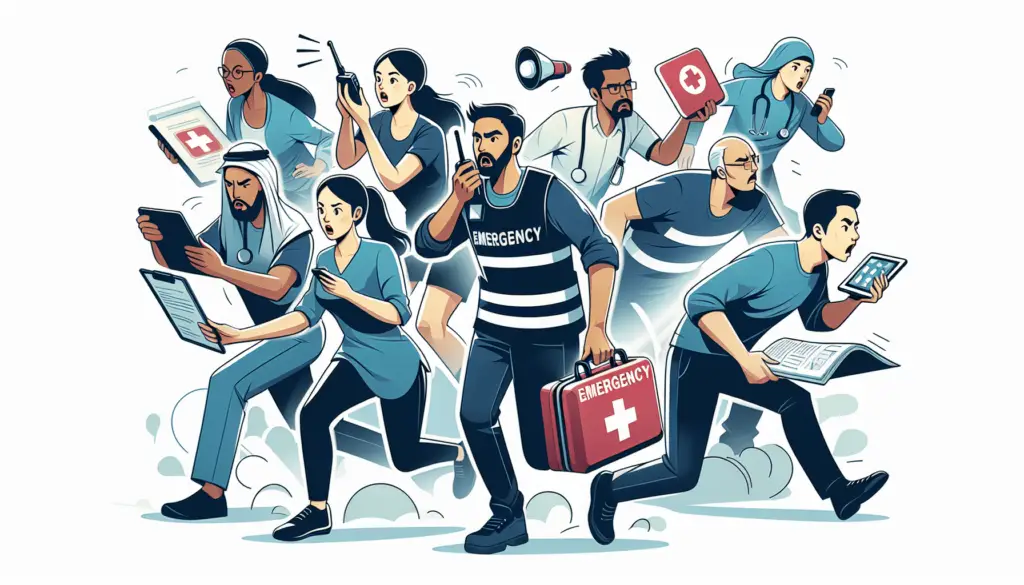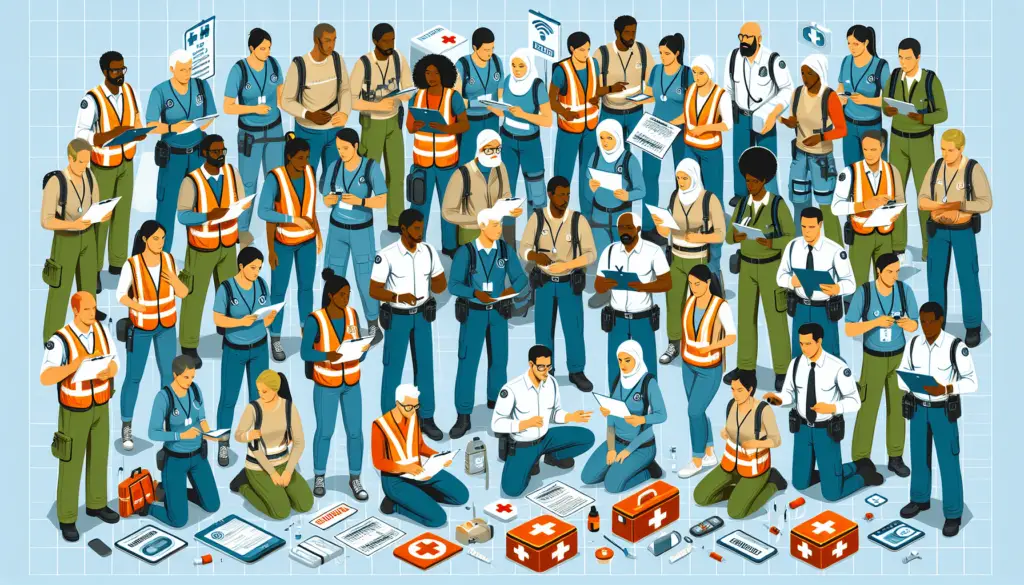Welcome, dear reader! In this article, you will learn the essential steps on how to plan and organize a community emergency drill. From identifying potential risks to coordinating with local authorities and volunteers, you will gain insightful tips on ensuring the safety and preparedness of your community in the face of emergencies. Let’s dive in and start making a positive impact together! Have you ever wondered how to plan and organize a community emergency drill to ensure the safety and preparedness of your neighborhood in times of crisis? In this guide, we will walk you through the step-by-step process of creating an effective emergency drill that will help your community stay safe and ready for any unforeseen events.

Assess Your Community’s Needs and Risks
Before you start planning your emergency drill, it is important to assess the specific needs and risks of your community. Consider factors such as the types of natural disasters that are common in your area, the demographics of your community, and any vulnerable populations that may require special assistance in the event of an emergency.
Conduct a Risk Assessment
Create a list of potential emergency scenarios that your community may face, such as earthquakes, floods, fires, or power outages. Evaluate the likelihood of each scenario occurring and the potential impact it could have on your community. This will help you prioritize your planning efforts and focus on the most important scenarios.
Identify Vulnerable Populations
Consider any individuals in your community who may require special assistance during an emergency, such as elderly residents, people with disabilities, or non-English speakers. Make a list of these vulnerable populations and develop a plan to ensure that they are included in your emergency drill and can receive the assistance they need.
Create an Emergency Management Team
To effectively plan and organize a community emergency drill, you will need a dedicated team of trained individuals who can help coordinate the effort. Form an emergency management team with members who have diverse skills and expertise, including first aid, communications, logistics, and emergency response.
Assign Roles and Responsibilities
Clearly define the roles and responsibilities of each team member to ensure that everyone knows what is expected of them during the emergency drill. Assign tasks such as setting up the drill, coordinating participants, managing communications, and evaluating the effectiveness of the drill.
Conduct Training and Exercises
Provide training and conduct exercises for your emergency management team to ensure that they are prepared to handle various emergency scenarios. Practice communication protocols, emergency response procedures, and coordination with local authorities to build the team’s confidence and proficiency.
Develop an Emergency Response Plan
A comprehensive emergency response plan is essential for ensuring that your community is well-prepared for any emergency situation. Develop a detailed plan that outlines the steps to be taken before, during, and after an emergency, including communication protocols, evacuation procedures, and emergency resource management.
Establish Communication Protocols
Create a communication plan that outlines how information will be disseminated to community members, emergency responders, and other stakeholders during an emergency. Identify key communication channels, such as social media, email, text messaging, and public address systems, and ensure that they are reliable and accessible.
Coordinate With Local Authorities
Collaborate with local emergency response agencies, such as fire departments, police departments, and medical services, to ensure that your emergency response plan aligns with their protocols and procedures. Establish clear lines of communication and coordination to facilitate a seamless response to emergencies.
Select a Date and Time for the Drill
Once you have assessed your community’s needs, assembled your emergency management team, and developed an emergency response plan, it’s time to select a date and time for the drill. Choose a time when most community members are available and willing to participate, such as a weekend morning or afternoon.
Notify Participants and Stakeholders
Inform community members, local authorities, and other stakeholders about the date and time of the emergency drill well in advance to ensure their participation and cooperation. Provide detailed instructions on how to participate in the drill, what to expect, and where to gather.
Prepare Drill Materials and Resources
Gather all necessary materials and resources for the emergency drill, such as first aid kits, communication devices, evacuation maps, and emergency supplies. Ensure that all equipment is in working order and easily accessible during the drill.

Conduct the Emergency Drill
On the day of the emergency drill, gather all participants, stakeholders, and emergency management team members at the designated location. Follow your emergency response plan and simulate the chosen emergency scenario to test the community’s preparedness and response capabilities.
Communicate Clear Instructions
Provide clear instructions to participants on what actions to take during the emergency drill, such as evacuating the area, seeking shelter, or administering first aid. Encourage everyone to follow the established protocols and procedures to ensure a realistic and effective simulation.
Evaluate the Drill Performance
After the emergency drill is completed, gather feedback from participants and observers to evaluate the performance and effectiveness of the drill. Identify areas of improvement, such as communication gaps, response delays, or equipment malfunctions, and make adjustments to your emergency response plan accordingly.
Debrief and Review
After the emergency drill, hold a debriefing session with your emergency management team to discuss the strengths and weaknesses of the drill and identify lessons learned. Review the feedback and observations from participants and stakeholders to refine your emergency response plan and improve the community’s preparedness.
Implement Lessons Learned
Use the feedback and insights gathered from the emergency drill to update and enhance your emergency response plan. Address any gaps or deficiencies identified during the drill and implement new strategies, procedures, or resources to strengthen the community’s resilience and readiness for emergencies.
Schedule Regular Drills and Training
To maintain the effectiveness of your emergency response plan and keep the community prepared, schedule regular emergency drills and training exercises throughout the year. Practice different emergency scenarios, test new response strategies, and involve more community members to build a culture of safety and preparedness.
By following these steps and guidelines, you can successfully plan and organize a community emergency drill that will help protect and prepare your neighborhood for any unexpected events. Remember, preparedness saves lives, and every effort you make to strengthen your community’s resilience will have a lasting impact on the safety and well-being of everyone involved.
